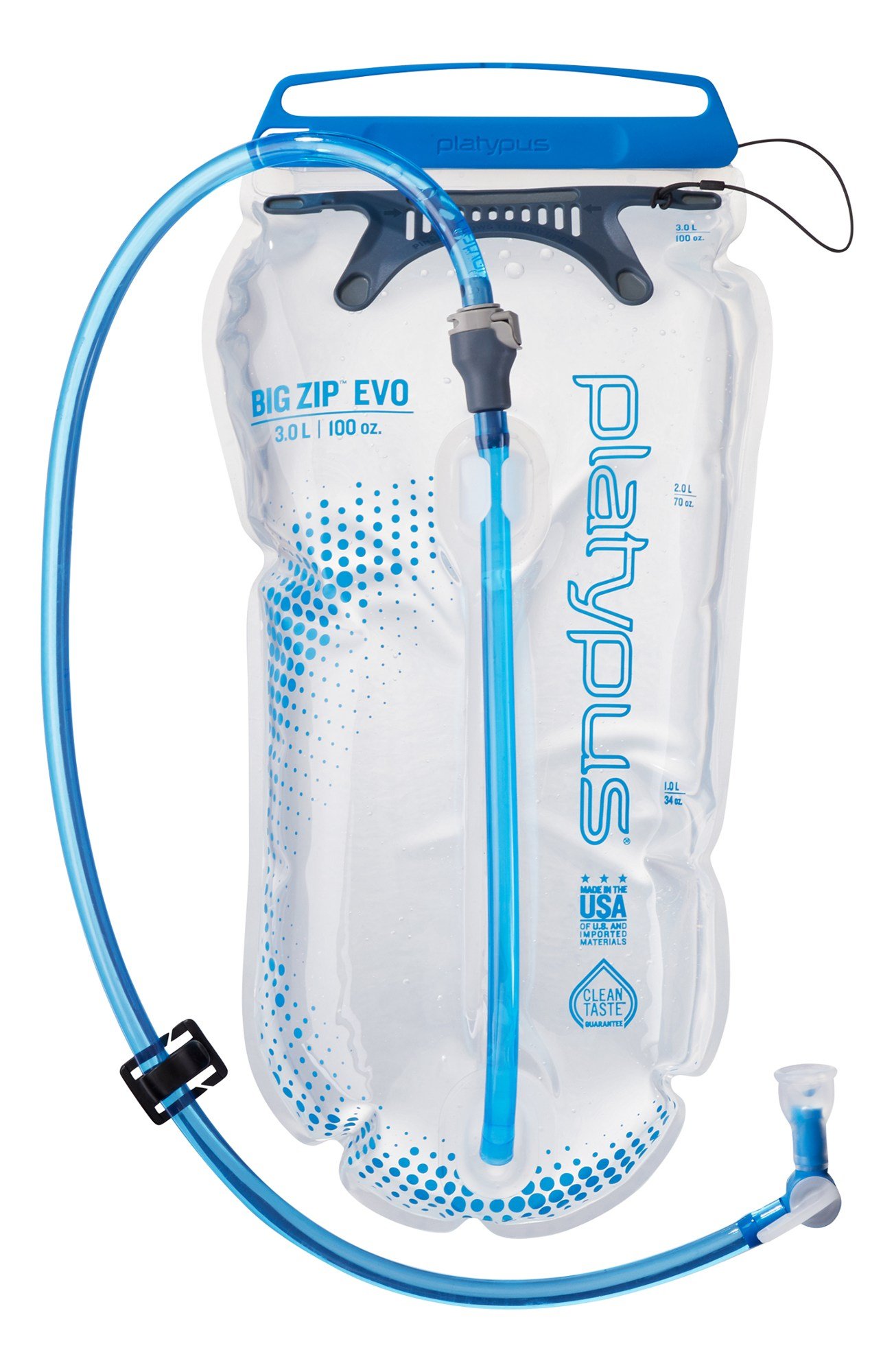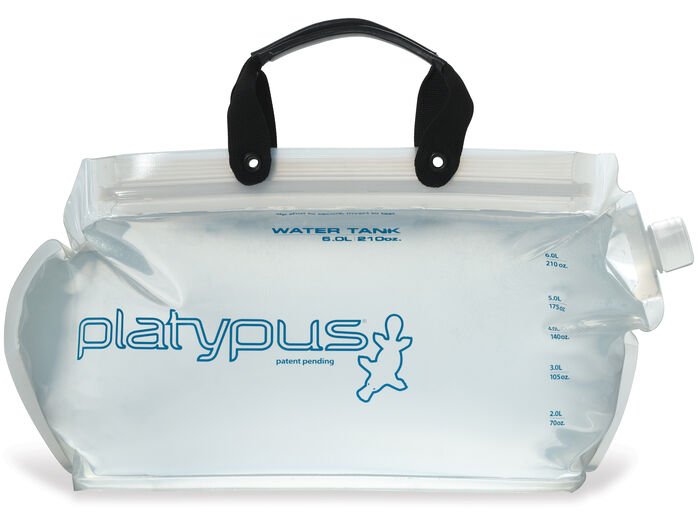Water Management for Backpack Hunters
We all need water, especially on a backpack hunt. It’s the one thing that you’ll want after a long climb on an early season hunt and it’s the one thing that can quickly become scarce if not managed well enough. Water management is not complicated, but it’s worth taking the time to plan for prior to your hunt so you can make sure you have enough to sustain yourself for however many days you’re in the field.
Packing In Your Water
Image courtesy of Gary Yost @gyostimages
There are some hunts where water is going to be extremely scarce. Maybe you’re hunting the high country where springs don’t exist or maybe you’re hunting the desert where water is even more scarce. In low flow cases, hunters often prepare their backcountry hunting camps by staging water in a cache during preseason scouting trips. The benefit to this approach is you don’t have to carry so much water with you on that first hike in and you can rest easy knowing that when you get to camp you’ll have plenty there waiting for you.
For shorter trips like a quick overnight hunt, some hunters choose to carry all the water they’ll need for the duration of the hunt from the trailhead. At roughly 2 lbs per liter of water, pack weight can add up quickly if you’re using this method, but if it’s the only option you have, then it’s what you have to do.
Plenty of backpack hunters are willing to haul the water they need for the duration of a trip just in case locating a spring or a high mountain water source is going to be a challenge.
Welcome to backpack hunting!
Leveraging Natural Water Sources
If you’re lucky enough to be hunting a region where water is plentiful or springs are accessible, then leveraging those natural resources is by far the best way to go. You can leave the trailhead with enough water to get you to where you need to go then plan on filtering the rest when you arrive at camp or your known water source.
For hunts later in the summer but prior to those fall rains, it’s important to know which resources are reliable and flowing and which are not so a little preseason scouting of the area is key. You can also call ahead to the local ranger station for the most recent water reports. The last thing you want to find out is the water source you were relying on to be available has long since dried up.
Filtering water from natural sources once you’re in the backcountry will keep your overall pack weight down and put your mind at ease knowing you’ll have as much water as you need for however long you need it. You won’t need to ration water out for each day and you can drink your fill of coffee until your heart’s content.
Image courtesy of Sies Kranen @sinusfiction
Everything Needs Water: Plan Accordingly
It’s not just you who needs water. Your dehydrated meal needs it, your energy mix needs it, your coffee needs it, and if you’re wanting to wash your face with warm water from your stove or brush your teeth, then your face needs it too, so plan accordingly!
Estimate how much water your meals and coffee require before you head out down the trail thinking you have enough to get by. It would be a shame to get to camp and have to decide which is going to get the water, your mouth, or your meal.
Take inventory of what you’re bringing that will require water and make sure that when you’re either stashing water, hauling it in, or filtering it from a natural source. Account for all of it. You’d be surprised at how quickly a 2-liter bag of water goes empty at camp.
Learn to manage your water and forecast your needs and there won’t be any unfortunate backcountry surprises.
Water Storage Options
When it comes to storing your water or hauling it around, it’s not exactly rocket surgery. You put the water you need into a container and make sure it gets from point A to point B. Easy enough, but it’s the container that might make the difference in how well-protected your water is and how well it makes the journey. Below are a few great options for storing your water for your backpack hunt;
Water Bladders
For those who want water accessible to their faces at all times when they have a pack on their back, they’ll be looking at using a water bladder and hose. This is a pretty standard method of staying hydrated in the backcountry and a popular choice, however, there are some potential issues.
Water bladders take up space on the inside of a backpack, can be challenging to refill at water sources, and are awkward to pull water from if you’re filling a cup for coffee or a meal. They’re also subject to failing, leaking, and leaving the contents of your backpack soaking wet. Once your spring a leak, there’s no going back and there are plenty of stories to go around about hunters waking up to an empty water bladder that’s been slowly soaking their gear all night.
Of course, not all bladders are going to pop or leak. Many hunters hunt for years using bladders, but it is something to be aware of. The moral of the story is don’t be sloppy with your water and take extra caution when closing your bladder, setting it down, or stuffing it in a pack.
Collapsible Bottles
Collapsible water bottles are great for both a primary means of hydrating and for storing/carrying extra water. They come in various sizes from .5 liters to 2 + liters and when not in use, they pack down small for storage. Not all bottles are made equally though. Some are of higher quality where the seams are well built and lids stay on whereas others are of lesser quality that often fails after a few uses. When it comes to water, it’s always a good idea to purchase the best quality container you have so you reduce the risk of failure.
Regardless of the bottle you choose, always be mindful of where you set your water down so as not to puncture it on rocks or sharp debris.
Plastic Bottles
Long-distance hikers are well aquatinted with the concept of using a standard water bottle you can get from a gas station as a primary means of water carry. Brands such as SMART make a durable and functional water bottle that can also be used alongside a water filter such as the Sawyer Squeeze. Once they’ve been beaten up a few times, they can be swapped out for a new one. They also come in sizes ranging from .5 liters to 1.5 liters.
Standard plastic bottles like these make it easy to toss in a side stretch pocket and are extremely reliable and puncture-proof. As a primary means of water carry, they make sense, but for hauling extra water to and from camp, they’re overkill since they don’t collapse down once they’re empty.
Insulated Bottles/Containers
A lot of hunters headed into the backcountry in the later seasons opt for an insulated water bottle as an accessory to keeping coffee warm throughout the day. These bottles are heavier than a plastic bag or water bladder, but they do come in handy when keeping water cool or coffee hot. Those who carry these swear by them and will gladly haul the extra weight if it means having the ability to keep their beverage hot or cold throughout the day.
For hunters spending long hours glassing from windy ridgetops, an insulated bottle with hot coffee is a nice way to warm up.
Standard Wide Mouth Bottles
Ranging anywhere from .5 liters to 1.5 liters, you have the standard wide-mouth water bottle that can be found in the hands of any outdoor lover. Nalgene has made a name for itself in the outdoor community and their bottles come in a variety of sizes, spout openings, and materials.
These bottles are great for mixing powders because they have a wide opening at the top and regardless of the material chosen, they’re crazy durable. Some are even said to be shatterproof so if your hunt happens to be full of sharp rocks, maybe this is a great option for you. As a primary means of drinking water, these bottles are great, but because they don’t collapse, they do take up space when not being used.
Final Thoughts On Water Management
Water carry and management on your backpack hunt isn’t hard, but it does take some forethought and future-proofing. If you’re familiar with the region you’re hunting and have the ability to scout it prior to the season, then you’ll be way ahead of the curve for planning and preparation. If, however, you’re hunting out of state and aren’t sure about the conditions where you’re going, it’s worth a phone call to a local ranger station or guide service to get the latest and greatest information on where you’re going. They’ll also be able to tell you what method of carry is most popular for that region and refer you to experts in the area for further information.
Emory, By Land
Thanks for stopping by the website and checking out this article! If you have any questions for me, you can leave a comment below or shoot me a personal message at emory@byland.co.
Other Suggested Gear
There are a lot of different brands out there to choose from so here are a few to get you going.











